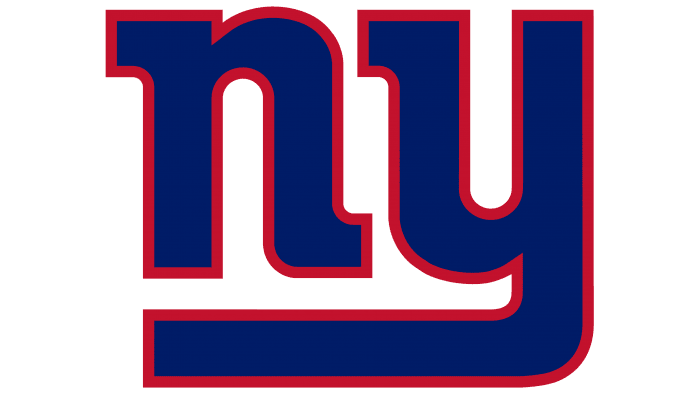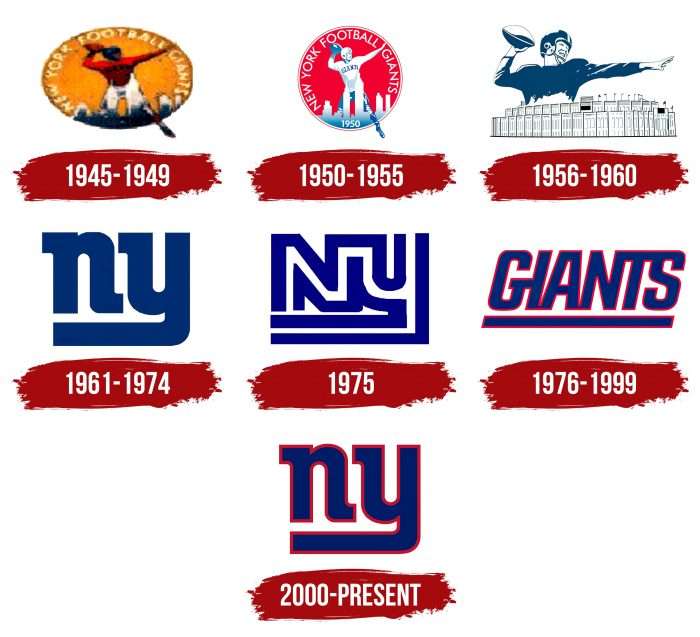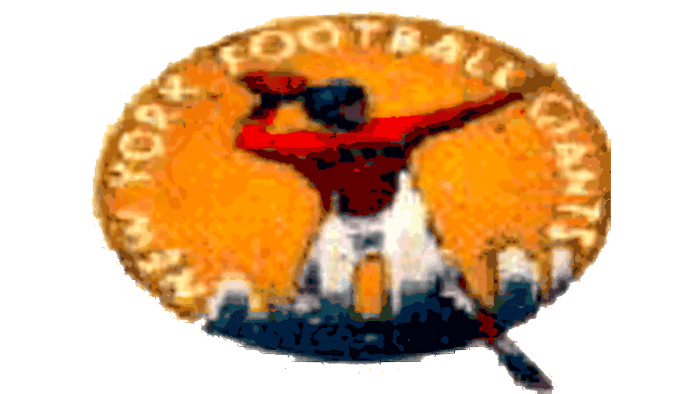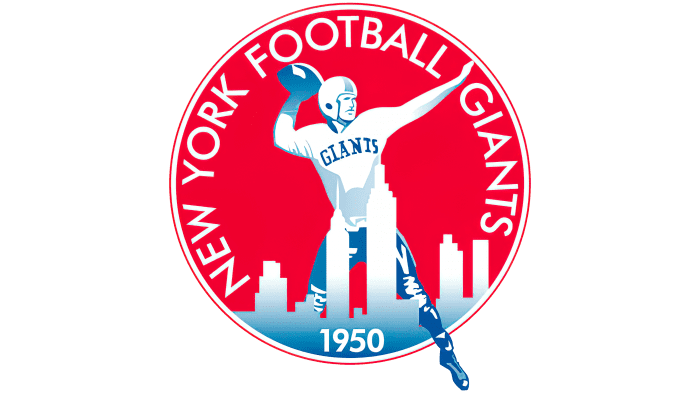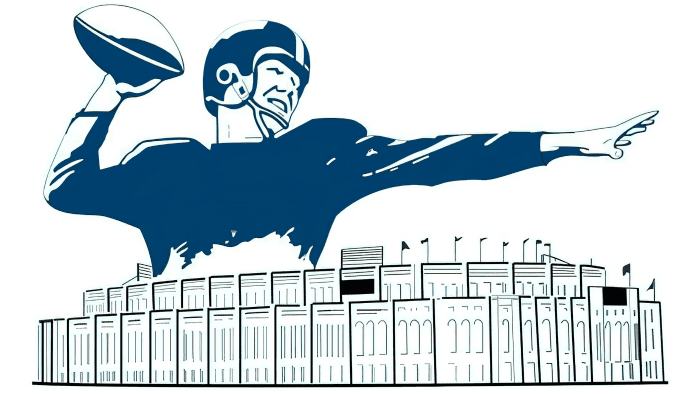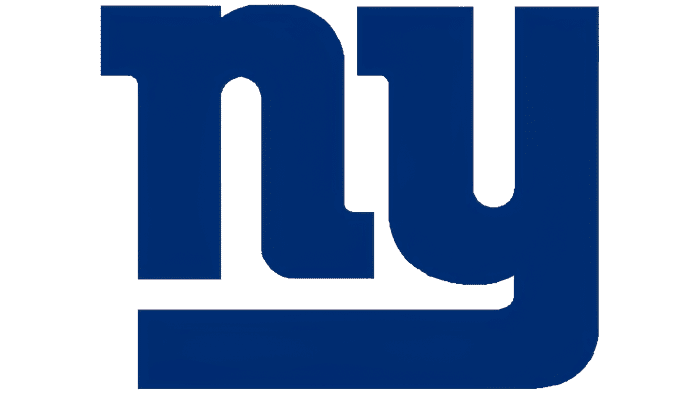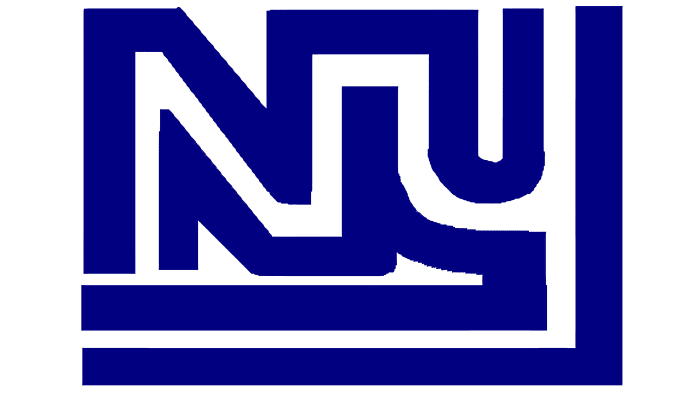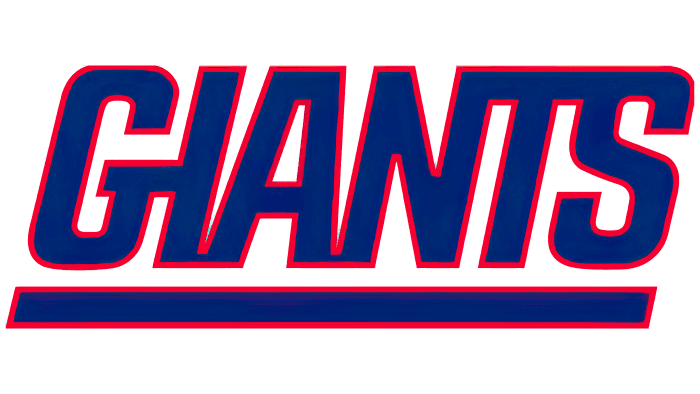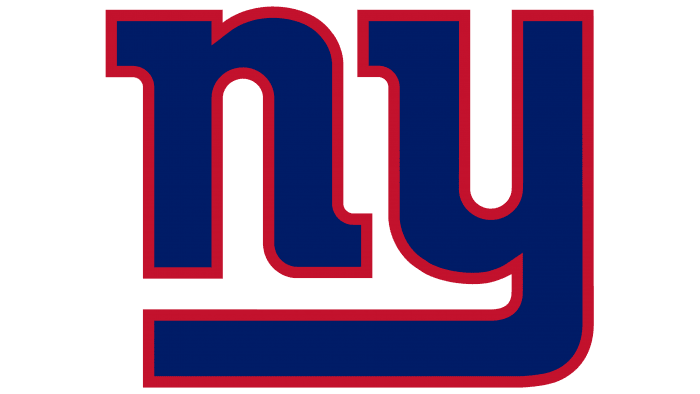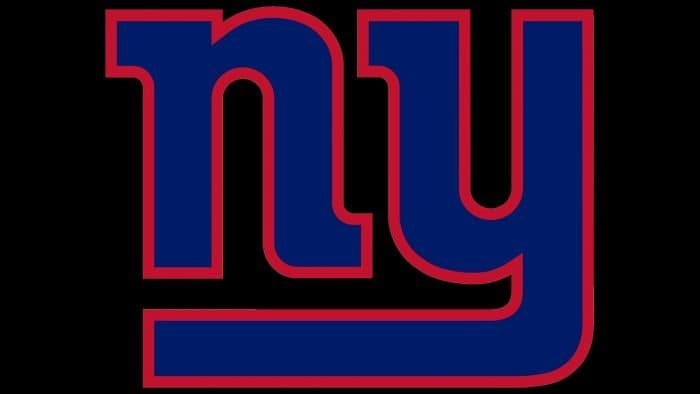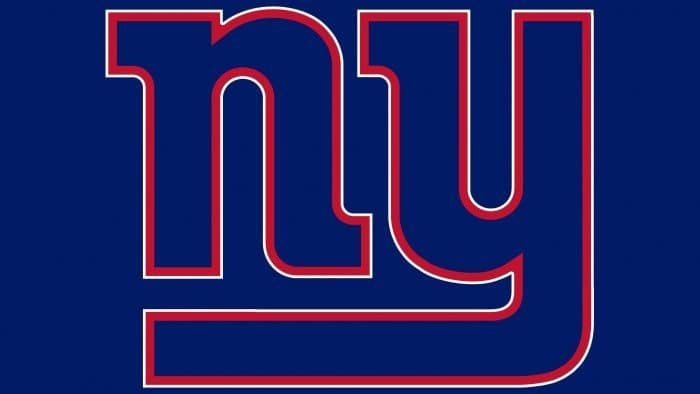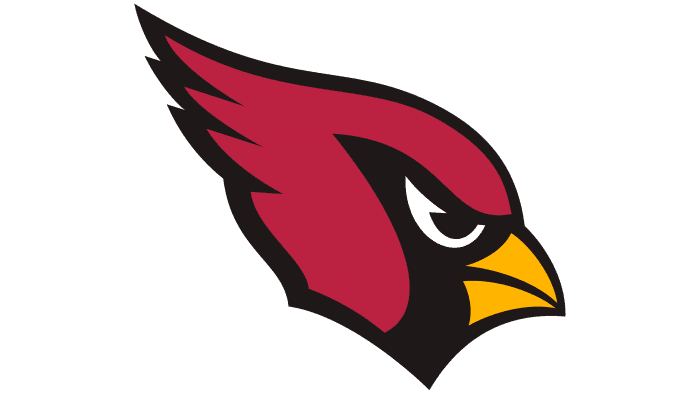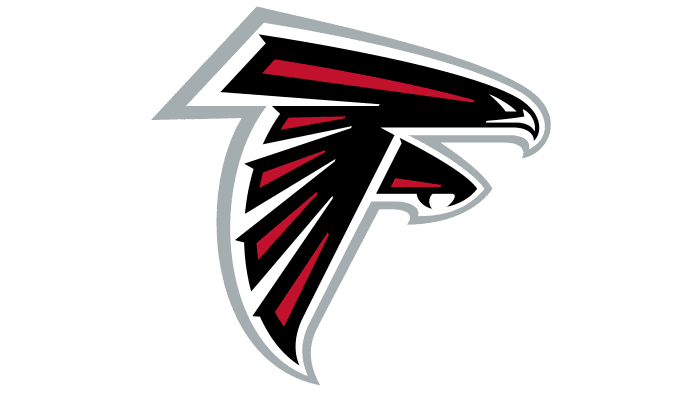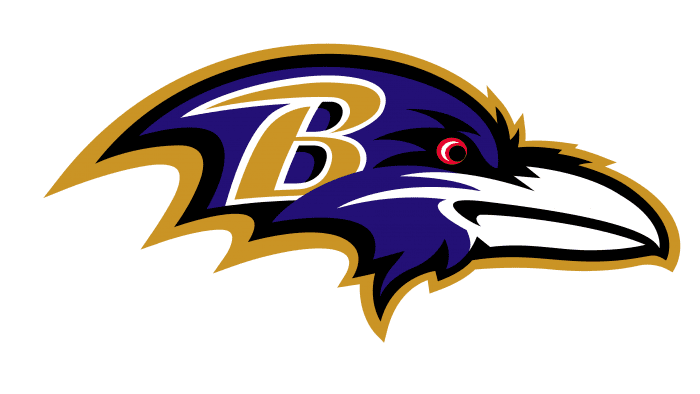The concise monogram emblem is a stylish and modern visualization of the New York Giants. The New York Giants logo focuses on the city where the team is based, reflecting a radical change in the concept of the game while simultaneously paying tribute to its historical roots.
New York Giants: Brand overview
| Founded: | August 1, 1925 |
| Founder: | John Mara, Steve Tisch |
| Headquarters: | East Rutherford, New Jersey |
| Website: | giants.com |
The New York Giants are a professional American football team playing in the National Football League (NFL) as a member club of the National Football Conference (NFC) East Division. It was founded in 1925. The team plays its home games in East Rutherford, New Jersey.
The first owner of the club was Tim Mara, who purchased the NFL franchise for New York for $500. He owned the team until his death in 1959. Mara left the Giants to his sons, Jack and Wellington. They were co-owners of the team until 1964.
From 1965 to 1990, the team was owned by Wellington and Tim J. Mara, who sold his share to Bob Tisch in 1991 for 80 million dollars. Since then, the franchise has been owned not only by the Mara family but also by others. From 2005 to the present, John Mara and Steve Tisch have been the co-owners of the team.
Owner Tim Mara chose “Giants” because his team would play at the Polo Grounds, where the New York Giants baseball team is based. Mara “borrowed” the Giant name from the city’s Major League baseball team because its owner, Charles Stoneham, organized and promoted the professional football team New York Giants in 1919. The team disbanded before its first game. Originally, the “Giants” got their name from the city’s giant buildings.
Meaning and History
Throughout its history, the New York Giants team experimented with several logos. Giants logos have revolved around three different concepts:
- A giant football player is ready to throw a pass.
- The word “Giants.”
- Variations on the theme of New York initials.
The official colors of the team are white, red, and royal blue. These colors have been used almost always, except for the first 25 years and the period from 1955 to 1976 when there was no red color in the logo. The font is individual, with lowercase letters.
What is New York Giants?
The “New York Giants” represent the NFL, a professional team of American football players. The franchise was formed in 1925. It is now part of the Eastern Division and is part of the NFC. The club plays its home games at MetLife Stadium – in East Rutherford, near New York City.
1945 – 1949
During this period, the “New York Giants” used the image of a giant quarterback. He is passing against the backdrop of the New York skyline, his right hand throwing a pass, and his left extended to the side. The quarterback in uniform stands on a yellow-orange background. Around him is the white inscription “NEW YORK FOOTBALL GIANTS.” Below are dark blue shadows (on the silhouettes of skyscrapers). The Giants’ emblem is oval, in the shape of a football.
1950 – 1955
In 1950, another logo design, created by Marie Barclay Steimmuller, was approved. The logo again depicted the Giants’ quarterback about to throw a football, but the style and color palette were changed. The logo became more modern, and its colors became red, blue, and white. The words “Giants” on the player’s jersey and “1950” at the bottom (against the backdrop of buildings) were added. The main details remained the same.
1956 – 1960
This version again depicts a giant blue quarterback playing on the team’s nickname. The difference is that the quarterback towers over Yankee Stadium, not over New York’s main skyscrapers. Yankee Stadium was the team’s home arena from 1956 to 1973. The red color was removed from the logo, leaving only white and blue. In addition, the image of the quarterback is now not full-length but in half.
1961 – 1974
Starting in 1961, a stylized blue “NY” was used as the updated emblem of the “New York Giants.” The lowercase letters “NY” stand for New York. The graphically elongated leg of the letter “y” stands out, forming a kind of platform for “n.” The color of the emblem is dark blue.
1975
In 1975, designers revisited the design of the elements of the New York Giants logo. So, instead of a solid blue “NY,” they suggested stylized letters and added a thin white middle contour. They also changed the font and replaced lowercase letters with uppercase. The letters “NY” stand for New York.
1976 – 1999
A year later, the New York Giants emblem was again updated. The lowercase letters “NY” were replaced after the season with the team’s nickname, written in dark blue font on a white background with a thin red outline. All elements converge at the intersection points. There is a wide underline of the same color as the team’s nickname below the letters. This change was due to the team moving to the Meadowlands in New Jersey.
2000 – today
In the 2000 season, the club decided to return to one of its old logos – from 1961. As the main logo of the New York Giants, the lowercase letter “NY” returned. They updated the stylized dark blue color and red border. The leg of the letter “y,” extending to the side, looks the same as on the original logo.
New York Giants: Interesting Facts
The New York Giants are a football team from the New York area with a long history since they started in 1925. They’ve done a lot in football over the years.
- Starting Out: Tim Mara founded the Giants in 1925 with just $500. They quickly became popular and helped make the NFL what it is today.
- Winning the Super Bowl: They’ve won it four times (XXI, XXV, XLII, XLVI). Their wins against the New England Patriots in XLII and XLVI were exciting because they were the underdogs.
- A Famous Game: The 1958 Championship game they lost to the Baltimore Colts is called the “Greatest Game Ever Played” because it was thrilling and was the first NFL game to have overtime.
- Famous Players and Coaches: The team has had some amazing players, like Lawrence Taylor, considered one of the best defensive players ever, and coaches like Bill Parcells, who helped them win two Super Bowls.
- Family Ownership: The Mara family has owned the Giants since the beginning, and the Tisch family joined them in 1991. This has helped keep the team strong and successful.
- Miracle at the Meadowlands: In 1978, a game against the Philadelphia Eagles ended in a crazy moment when the Giants fumbled, and the Eagles scored, changing how teams play at the end of games.
- TV Pioneers: In 1950, the Giants were the first team to have all their games on TV, showing the Mara family how important TV would be for football.
- Big Rivalries: They have big rivalries with the Philadelphia Eagles, Dallas Cowboys, and Washington Football Team, making for some of the most intense games in the NFL.
- Their Stadium: Since 2010, they’ve shared MetLife Stadium with the New York Jets. It’s a huge stadium that even hosted Super Bowl XLVIII.
The story of the New York Giants is full of big wins, important games, and great players and coaches. They’re a big part of the NFL’s history and have a strong connection to their fans.
Font and Colors
Since 2000, the “New York Giants” have used a text emblem containing only two letters: “n” and “y.” It demonstrates its patriotism and tribute to fashion, as logos containing the name of the city are popular in the sports field.
The first club badge with the abbreviation “NY” appeared at the New York Giants back in 1961. It has transformed several times until the words “GIANTS” appeared on the emblem. After the revival, the combination of the letters “NY” acquired a thin red outline. This version is significantly different from the logos the team had before 1961. Early identity elements included a football player with a ball against the backdrop of New York skyscrapers or Yankee Stadium.
The logo uses an individual font developed in 1961 specifically for the New York Giants. Both letters are lowercase and bold, with rounded sides and rectangular serifs. The lower horizontal stroke of “y” extends to the left and goes directly under “n.”
The color palette is classic: dark blue – letters, red – outline, white – background. The red line is the only difference between the current logo and the version the team used in 1961-1974.
New York Giants color codes
| Dark Blue | Hex color: | #0b2265 |
|---|---|---|
| RGB: | 1 35 82 | |
| CMYK: | 100 75 0 30 | |
| Pantone: | PMS 2758 C |
| Red | Hex color: | #a71930 |
|---|---|---|
| RGB: | 163 13 45 | |
| CMYK: | 20 100 80 0 | |
| Pantone: | PMS 187 C |
| Silver | Hex color: | #a5acaf |
|---|---|---|
| RGB: | 155 161 162 | |
| CMYK: | 5 0 0 30 | |
| Pantone: | PMS 429 C |
FAQ
Why did the “Giants” change their logo?
The first change of the “Giants” logo (1961) is related to a revision of the concept. The administration wanted to move away from the image of a giant pitcher, so they used a variant related to the location. As part of the recent update (in 2000), the team returned to the emblem with the lowercase letters n and y, but with a red frame. It is a tribute to historical roots and a fashion for emblems with city initials.
Why is the NY Giants emblem written in lowercase?
The NY Giants emblem is written in lowercase to emphasize the athletes’ admiration for the city where the team is based. The lowercase abbreviation “ny” is a tribute to the metropolis, demonstrating that although the players are giants, they are actually below it because the real giant is New York.
When did the NY Giants change their logo?
The change of the NY Giants logo, associated with the appearance of the text design, occurred in 1961. The transition to the current version took place in 2000.
